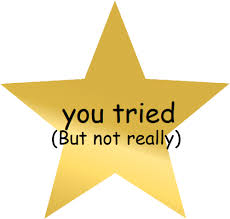If you spend any time in the online orchestra world, you’ve probably seen the Baltimore Symphony Orchestra’s infographic about American orchestras’ 2014/15 seasons. A few days ago, the BSO released figures tracking the 15/16 season, and this year, the data net has been cast even wider. Writer Ricky O’Bannon describes the methodology:
This season we collected programming data for both major American symphonies as well as smaller regional orchestras — 89 in total — to give a more holistic view of symphonic repertoire in the United States.
My thoughts after reading that:
Oh, cool! With so many more orchestras included in the data-gathering this year, surely the proportion of living and historic women composers has skyrocketed, or at least inched upward gradually!
Hahahaha. Hahahahahahahaha.
Last season, the works of female composers accounted for 14.3% of the performances of living composers (and a mere 1.8% of the performances overall). This year, even with the wider field? 14% and 1.7%, respectively.
And then there’s this little asterisk at the bottom of the graph.

…
…
*deep breath*

Look, I know it’s hard for orchestras to program works outside The Canon. And at this point, pretty much every orchestral work by women is outside The Canon. But no one in the bunch of eighty-nine orchestras wanted to program a single work by a female composer once? No one thought that would be musically or historically or politically or culturally interesting? No one thought that would be unique or exciting? No one thought that would be fantastic press release material? No one thought that would excite donors? No one thought that would advance orchestras’ missions to broaden audiences or educate communities? No one saw this as The Easiest Way Ever to outperform peer organizations? For crap’s sake, a random orchestra could program a dead lady’s ten-minute overture once, and wow, suddenly they’re playing 100% more historic women than any other orchestra in America! Congratulations, random orchestra! Your commitment to underrepresented demographics is palpable.

The 2015 Song of the Lark Award for Demographically Diverse Orchestral Programming
And hell, it’s not like I’m asking every orchestra to throw an annual month-long Vagina Festival. It just would have been nice to see one orchestra play one work by one woman at one point. I thought that someone, somewhere, would throw us a pity Gaelic Symphony or Farrenc third or Clara Schumann concerto. But, nope.
Anyway. I would love to offer probing analysis. But it’s pretty f***ing hard to analyze the number zero.

You couldn’t be more right! This is a shame and a scandal and a sign of a serious lack of imagination. It is all very well to perform works by living composers, of course, and that is praiseworthy. But our orchestras peform so much music by dead men — and there ARE dead women who wrote FINE works, works that their audiences are very likely to enjoy. Keep pushing! I hope the right people read you and think about it..
I’m a female composer, alive and well with fine orchestral scores and parts ready to go! ……oh wait, I’m not a 250-year old dead white guy…never mind…
oxox Patricia Leonard
The “Song…” and the issue engaged in today’s entry are appreciated. It would be helpful to the uninitiated (me) in grasping the the (lack of) acceptance of women in orchestral music to know more about the total number of compositions produced by women and men in a year (decade etc.), regardless of perceived quality, from which a program might be developed. Or, in other words, how many pieces might have been chosen but were not.
Are there any data which might enlighten the interested outsider?
That would be interesting data indeed! It can be hard to get exact numbers. Lots of the orchestral pieces men AND women wrote are now forgotten or not easily available, for a wide variety of reasons. So I’d imagine that data just doesn’t exist. I wonder what could serve as substitute data…or at least begin to answer the questions you raise. If anyone has any thoughts, let me know!
I doubt that there is an easy way to find out how many orchestral works by women, living or dead, but there are many catalogues, dictionaries, and encyclopedias now that are devoted to women and their music (whic would include m;usic of all genres –
David Daniels’ “Orchestral Music” lists all composers in one alphabet by name, but he has an appendix listing the names of 70 female composer of orchestral music whose work in catalogued in his book (with instrumentation, timings, and other useful information) Of these 70 names, 51 are still alive, and almost all of the 19 who are gone composed in the 20th century or, indeed, into the 21st.
The New Grove Dictionary of Music and Musicisans, 2nd edition (2000), has a substantial article on “Women in music” that includes an extensive bibliography to provide further guidance. The section of the article on “Western classical traditions in Europe and the USA” runs 10 pages of text followed by 6 full pages of biblipgraphy.
There are many, many sources from which information can be compiled, but no simple catalogues or listings ready to hand.
Very interesting post. I shared it on Facebook and compared it to the Savannah Philharmonic who for contemporary composers did OK but had no women composers at all.
It confuses me more that they specifically put that all female composers were alive. What happened to the compositions that were created by females that are no longer alive? It is more shocking that they, considering that they looked at the ratio, looked at the amount of female and male composers and thought it was a decent amount. There is great compositions by female composers out there. They should not be forgotten.
I suspect that the comment about living composers was made because orchestras are sometimes criticized for being “museums,” never trying anything new, but only trotting out the old. Of course, in the case of women composers, even those who have passed would offer a “new” experience for almost all audiences.
It looks like they left out the SPCO, which is playing the Bacewicz Concerto for Strings in May.
Great catch. I bet they limited the data to symphony orchestras and didn’t extend it to chamber orchestras.
This is cluelessness that has been more-than-allowed-to-happen; it’s been taught. It might take some dedicated festivals, symposiums, and core “why the heck are these outside the canon” courses. It’s also amazing what a difference can be made by a few people agitating for and insisting on change. Sometimes change takes a long time to come, but when the time is ripe, things can happen in a hurry. This is way overdue. Get educated and request great rep and the music won’t be denied. Thanks for a great wake up call!
Thanks for that comment, Rolf!!
Wow, that’s amazing and depressing. I will ask my conductor at our next rehearsal if he’s ever considered this issue. He makes of point of championing American music and lesser known works, so he may be open to addressing this concept as well.
I LOVE THAT. Thank you SO MUCH for caring about this! Every little bit helps!!!!
So, I talked with my conductor briefly tonight after our concert (I play under Monte Perkins in a group called Festival City Symphony in Milwaukee), and he said he has made suggestions about putting music by women composers on the program, but they always get axed by the board in the final cut. He said part of the reason for that is the modern compositions tend to be tricky, and being unfamiliar would probably suck up all of our limited rehearsal time, making it hard to figure out what to program with it. And apparently the cost to rent the parts for music he’s looked into by dead women composers wind up being too expensive to be feasible for an orchestra of our size. But he does work hard to introduce our audiences (and us) to lesser known works, and his own passion is for American music so we do a program of just that for a whole concert almost every season. He thanked me for the reminder that this is another area worth exploring. If you ever want to email me (or him directly I suppose) with a list of viable suggestions I’ll bet something would come of it at some point.
Love it! Thank you for taking the initiative! There are definitely financial issues at play. It’s a good reminder to me that some people DO want to play these things; they just may be expensive and/or difficult to find. But I also have to believe that those are surmountable problems, as long as the will and passion is there. The Women’s Philharmonic Advocacy has a basic repertoire list. Would that be something that would be helpful? It’s here: http://www.wophil.org/repertoire-suggestions-2015/ I bet a group of professional musicians or administrators, historians, and obsessive bloggers (cough) could get something more comprehensive done at some point. If you or anyone else reading this would like to see such a resource, let me know and I’ll put it on the SOTL future project list! Thanks for your comment.
The community orchestra I used to play in when I lived in Massachusetts hired a woman conductor/music director two years ago. She made a point of programming a piece by a (living) woman composer and a piece by a (living) African-American composer last season. Both were fun to play and well-received by the audience. While she didn’t program any pieces by dead women or African-Americans, I still think that there’s a point to be made. Female and minority music directors may be more sensitive to these types of issues and diversity at that level should help diversity in programming. I also think that community orchestras are pushing this envelope and should be applauded for doing so.
Great point. The smaller the ensemble, the more flexibility they tend to have.
You know, Emily, there’s an anonymous group of visual artists called The Guerrilla Girls that you ought to look up, as their agenda is directly parallel to yours.
I feel like I would be remiss if I didn’t point out that the Minnesota Chorale is doing a project this spring “Women in Music,” featuring women composers, women conductors, and women’s voices. It’s a bit of a cheat…I think women composers are more prominent in the choral world. But still, it will be a great project!
Ooo, great tip!! I’ll definitely check it out. Keep me posted.
Oh, and thanks for the tip on Louise Farren’s Third Symphony. Loved it, and just got the recording from Amazon!
Yay!
Hi! I just wanted to say I recently stumbled across your blog while looking for materials on historic female violinists and love your work!
If you are interested I have also written some posts along the same lines:
https://simonetrollmo.wordpress.com/2015/12/21/the-forgotten-perspective-female-violinists-of-the-baroque-era/
and recently on Isabella Leonarda, the Italian nun composer:
https://simonetrollmo.wordpress.com/2016/06/16/in-the-company-of-italian-nuns/
I can only hope that we can collectively raise awareness of all these creative women from the past and present who are just as worthy of our attention!
Thanks so much for these links!!